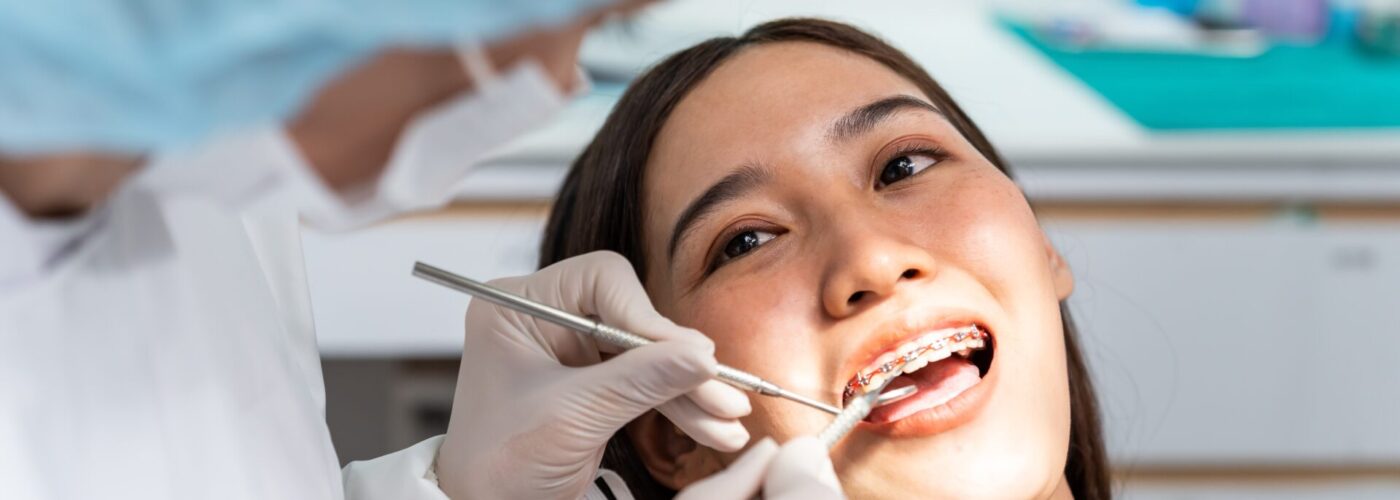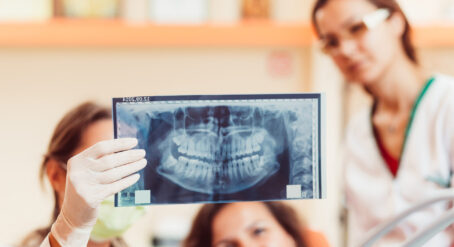Ever wondered how braces get put on? It’s a unique experience that over 400,000 Australians have gone through, and in this article, we go into all the details; from what it feels like, to how the glue tastes, to what comes after!
The procedure of putting braces on teeth can feel like a foreign concept for new patients or parents – but with around 400,000 people in Australia who’ve had it done before, there are lots of insights and experiences that can help you understand the process. You may be wondering how long putting braces on takes, how they fix the braces to your teeth, what it feels like or how the whole process might differ for different types of braces. We’ve pulled together answers to the most common questions to dispel any myths and help you feel a little more prepared.
Different types of braces
First off, there are different types of braces available, and your specialist orthodontist will recommend the type best suited to your age, orthodontic needs and may also take into consideration your finances. From clear aligners and ceramic braces (which blend in with the colour of your tooth enamel), to metal or lingual braces that sit in front or behind your teeth, each solution comes with its own processes and procedures.
How are braces put on?
Before you get braces put on, your orthodontist will do a thorough examination of your teeth and jaw, which may include taking photographs and X-rays. Once they know what’s going on, they will prescribe the best treatment for you. This might begin immediately, or it may require a few weeks of preparation – for example wearing special spacers on your teeth until your next appointment to make some room between your molars.
On the day, your orthodontist will first clean and dry your teeth. For metal, lingual or ceramic braces, they’ll then apply a special glue to the front or back surface of your teeth (front for metal and ceramic, back for lingual) and stick little ‘brackets’ to the centre of your tooth. Your orthodontist will often use a blue light to set the glue and ensure the bracket is in place. When the brackets have been fixed to your teeth, your orthodontist will often connect them using archwires and tiny rubber o-rings, which you can choose the colour of for a more personalised appearance. Some orthodontists may use braces that have a self-closing mechanism, which do not necessarily require the use of o-rings (i.e. self-ligating brackets).
For clear aligners or ‘invisible’ braces, the process may be different. The orthodontist will often take a 3D intra-oral scan your mouth on your first appointment to start the digital planning process. Your clear aligners will be ready for your next visit, where your specialist will make sure they fit and you’ll be taught how to properly care for them.
What does it feel like when you get braces put on?
If you’re getting traditional braces, the glue might taste a little funny, but not to worry – it’s harmless. Some patients get a gentle, yet strange, sensation when the brackets are fixed to their back teeth from the light pressure of your orthodontist applying the bracket. Placing brackets requires your mouth to be open for a little while (i.e. often 15-30 minutes), but your orthodontist and their staff will keep checking in with you throughout the procedure to ensure that you remain comfortable . Then the orthodontic archwires are placed to start the tooth alignment process, you will feel some “tightness or pressure”. This will feel strange, however, it should not cause significant pain. A few hours later, this “tightness” will become “tenderness”. Simple over-the-counter pain relief is often recommended and will take the edge off the tenderness for most patients.
How long does putting braces on take?
The time it takes to get braces put on changes depends on the type of braces, but for most people it takes less than a one hour in total. For clear aligners, it’s may even be quicker, depending upon how many attachments you might require for your treatment.
What to do after getting your braces on?
After you get braces put on, what do the first few days feel like? Well, your orthodontist will teach you all about caring for your braces with new flossing, brushing and eating techniques. We often get asked, “When can I eat after getting braces put on?” You’ll probably have to eat soft foods that don’t require chewing for the first few days, and there will be foods to avoid throughout your treatment to protect your braces from breaking.
In the early days you might also experience some discomfort as your teeth start shifting and you get used to the new pressure – usually while eating. Your orthodontist might give you some wax to cover the brackets while your mouth gets used to the new sensation, and over-the-counter pain relief is often recommended. Once your teeth have gotten used to having braces on, the pain and discomfort will disappear.
Remember, your specialist orthodontist is always available to answer any questions and help you along the journey – you don’t have to do it alone!
Use our tool to find an orthodontist near you – no referral is needed.











